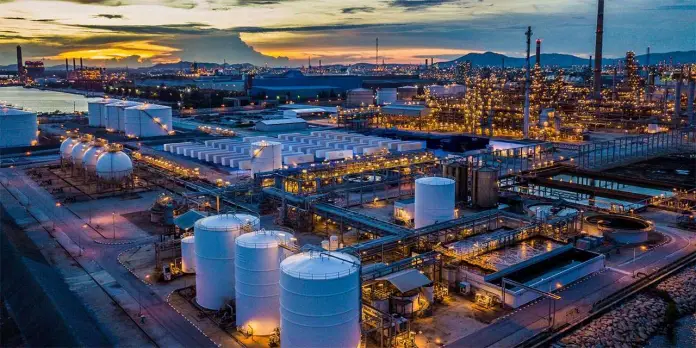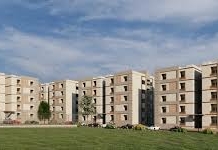Since 1971, when Pakistan lost its eastern wing to make independent Bangladesh, modern day Pakistan has undergone experimentation both in economic as well as in political terms but the rich in this country have become richer by riding upon economic policies of subsequent governments that failed to make Pakistan a welfare state and the poor have remained in the quagmire of misery, illiteracy and without viable opportunities that could make their life better.
All manifestos, budgets and policies of subsequent governments have reeked of what the miliary dictators, PPP, PMN, PTI or the religious parties would do for the poor, but the feeble capitalist structures of the private sector and the bad governance in the public sector have failed to achieve in practice what should have been achieved long ago by efficiently using the resources, both human and natural, for making this great country a developed and equitable nation for all its population.
Now, after 75 years, the grasp of the powerful few families on the political power as well as the economic assets, educational resources and opportunities is absolute through their musical chair of bad governance and bad economic decisions for the rest of the people. In 2022, Pakistan has acute crisis in all aspects, translating in price rise and inefficient governance, cartelization of markets and balance of payments problems. All these have resulted in rise in price of dollar, rise in price of energy inputs, rise in interest rates, inflation and even rise in unemployment and decrease in productivity of the labor and managers in the country.
GDP Growth Rate: In July 2019-2020, Pakistan’s GDP growth rate was minus (–) 0.9% and in 2020-2021 went up to a robust 5.7% and in 2021-2022 was recorded at 6.0%.
Sectorial Growth: The growth rate of agriculture sector of Pakistan in 2019-2020 was 3.9%, that came down to 3.5% in 2020-2021 and has shown a recovery by posting a growth of 4.4% in 2021-2022. The contribution of food crops – wheat, rice and maize is only 3% to our GDP, the contribution of cash crops is another 3% to the GDP and the contribution of minor crops is only 2% to the GDP, or farming contributes only 8% to the GDP and the rest 14.7% comes from animal farming, dairy farming and fisheries (12.7%) and another 2% from forests. The problems facing agriculture were huge like waterlogging, salinity, illiteracy among farmers, unavailability of productive variety of seeds, pest attacks, lack of water resources, change, rising cost of use of fertilizers, pesticides, and mechanization to name a few.
The growth rate of manufacturing sector of the country in 2019-2020 was minus (-) 7.8%, went up to a high performance of 10.5% in 2020-2021 and was 9.8% in 2021-2022, showing a slight decrease of 0.7%. The growth rate of commodity production sector of Pakistan in 2019-2020 was minus (-) 0.6% and went up to 5.4% in 2020-2021 and has posted a growth of 5.7% in 2021-2022. Manufacturing contributes only 12.4% to GDP of Pakistan, out of which, large scale manufacturing (LSM) industry contributed 9.2%. Small scale industry (SME) contributed only 2%, and slaughtering contributed 1.4% to GDP of Pakistan.
The growth rate of services sector of the country was minus (-) 1.2% in 2019-2020, went up to a robust 6.0% in 2020-2021 and has posted 6.2% growth rate in 2021-2022. Service sector contributes almost 70% to the GDP of Pakistan, but this largest sector of the country contributes very little to foreign exchange earnings and reached US $5.2 billion. Only export of IT services showed an increase in our exports but this did not make a dent in the overall deficit of Balance of Payment of Pakistan.
Issues: As Pakistan is a frontline state on Climate Change and as the country is also a fragile economy with GDP growth rates diminishing and the participation of industry and agriculture in the country’s GDP falling. The reasons are many: inbuilt inefficiencies, lack of policy initiatives, COVID-19 and Climate Change. Major causes behind slow economic and political transformation of the country from producer of primary products towards producing value added products and causes of underdevelopment are: pressures of the cold war, to which Pakistan was an active participant, and the hot military conflicts, that the country had had with its bigger neighbor India. Along with bad economic policies, lack of political vision, lack of political will, political instability, law and order situations, extremisms and terrorism, lack of administrative capacity to provide services to the people and industry, and the cancer of corruption and bad governance where more than 50% of GDP is embezzled by the elite, have taken their toll on the country’s socioeconomic and natural environment. In other words, due to above mentioned reasons, the economic gains have not been translated into social gains towards giving skill enhancement and income generating opportunities to the children of the poorer section of the society.
Today: The most important issues in June 2022 are how to earn more foreign exchange (dollars) through exports, and how to save dollars though import substitution, so that the rupee-dollar parity becomes in favor of the rupee, and decreasing BOP deficit, resultingly the domestic prices (inflation) can be stabilized and subsequently decreased in order to decrease the cost of doing business for enhancing producer’s surpluses, and decrease the prices of necessities, in order to enhance consumer surplus. How to enhance employment and income generation opportunities in the country in the near future, and how to bring down fiscal deficit without new taxes?
Balance of Payment problems can be solved through the following ways: One, allowing domestic producers, without government permits to produce more value added industrial and agricultural products that are of quality enough to be exported to different international markets by finding out what is being demanded, what is Pakistan’s comparative advantage and how capacity of this advantage can be enhanced and channelized towards exports. Governments should help link SME to international markets through branding and quality controls. Two, produce more import substitutes like domestic palm or soya bean oils and at the same time produce electricity by domestic resources, enhance production of domestic buses and allowing communities and industry to produce and sell on the market their own electricity, with government only monitoring quality. Three, to allow international tourist companies to bring in technology and management skills into the country’s tourism industry for attracting foreigners on profit sharing basis. Four, allowing through enhanced IT facilities to export services of doctors, accountants, lawyers and researchers etc. for foreign exchange earnings. Five, by providing one year skill trainings and international norms through certifications to boys and girls (youth) like nurses, plumbers masons etc. so that they can go for middle cadre jobs around the world to send remittances back to Pakistan.
Fiscal deficit can be decreased through: one, increasing taxes on the rich by reducing tax rates, increasing tax net, putting in place a wealth tax for super rich and a windfall tax on those that make money through speculation and hoarding. Two, decreasing indirect taxes on essential items, at the same time increasing these taxes on non-essential items. Three, increasing development expenditure for projects like water reservoirs and wind mills for electricity production, and four, reducing the volume of government into only those departments that enhance service delivery and downsizing non-essential for the economy departments and ministries, especially when they replicate in seven governments in the country. Six, restructuring institutions into small but efficient government institutions and shed the load of ‘white elephants’ in the public sector that are in perpetual deficit and need bailouts. Also, give golden hand shake to honest and incompetent employees, and remove incompetent and dishonest employees, restrict and channelize the working of competent but dishonest employees and at the same time give leadership role to those that are both competent and honest.
In a nutshell, the policy makers and market players should give enhanced skills and opportunities to youth through a proper and viable for the economy education system and vocational training. Give specific market based through competition, economic policy that helps earn foreign exchange and helps save foreign exchange, that accelerates growth through indigenous energy resources and provides employment and income enhancements opportunity to the future generation. Create robust, transparent and accountable institutions at all levels that abide by rule of law. Reduce volume of government and increase the capacity and serviceability of government institutions for better service delivery, quality control and environment protection. Provide a safe for investment and economic activity political, legal and security environment so that investors feel safe and can compete free of government intervention in order to reduce inefficiencies and externalities from costs.







